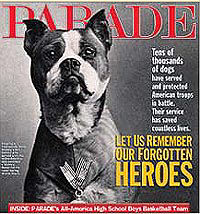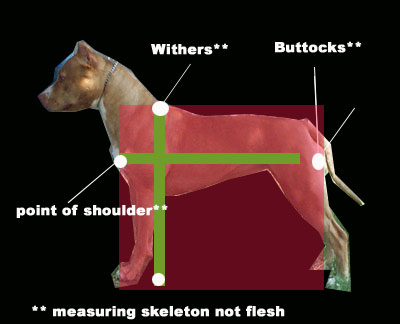
FIGURE 2 - Shows how to measure height and length. The white dots indicate the points of reference. These points are skeletal processes not flesh or muscle measurements. The proper points for height are the highest point of the scapula (see figure 3) at the withers to the ground. and for length the proper points are the point of the shoulder where the humerus meets the scapula back to the end process of the ischium (not the buttocks itself or the croup (see Figure 3). The perpendicular green lines above are of equal length and show this female is slightly longer than she is tall.
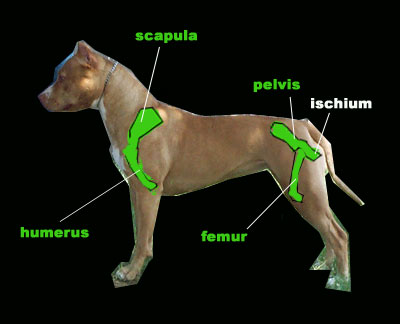
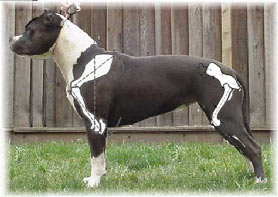
FIGURE 3- shows the terminology for the major bones of the shoulder and hips. These bones are important in conformation for a number of reasons. They help determine angulations, layback of shoulder, balance and other important aspects of structural mechanics.
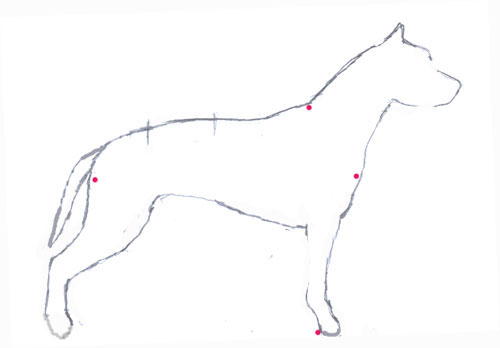
The above dog is "slightly longer than tall" as measured using proper landmarks (noted with red dots) and also has proper degrees of angulations. Notice the length of the loin compared to the dog below.
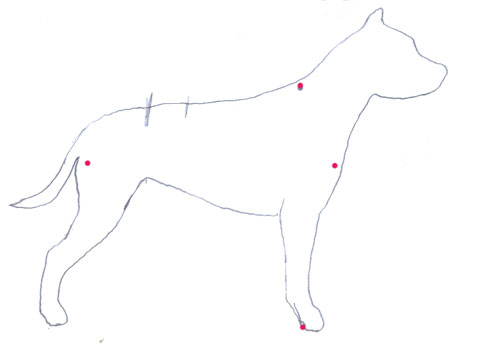
This dog is square but has proper degrees of angulations to suit the length of body. Notice however the turn to the stifle compared to the first graphic. If the square dog had more stifle the movement would likely be incorrect and this square dog would over reach or cross over when moving.

